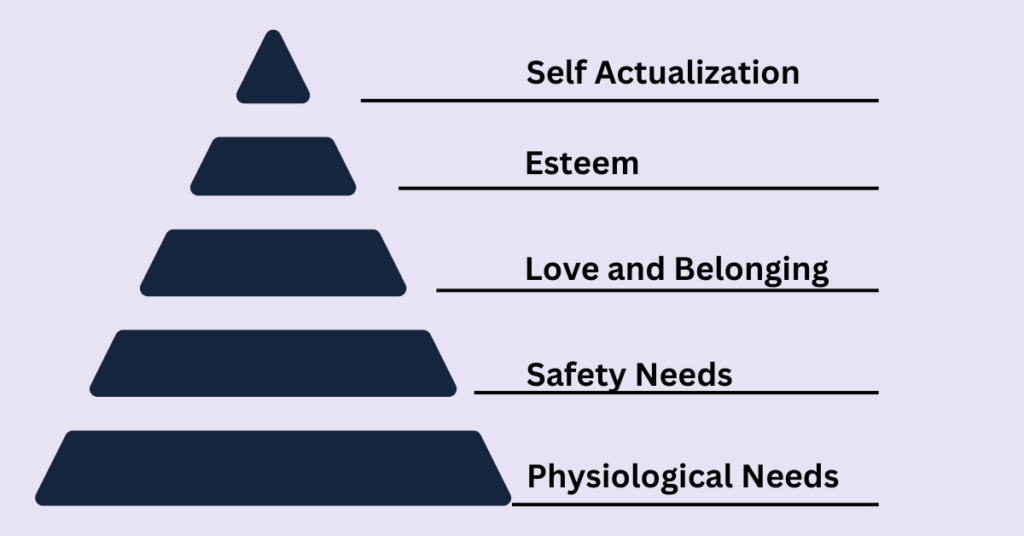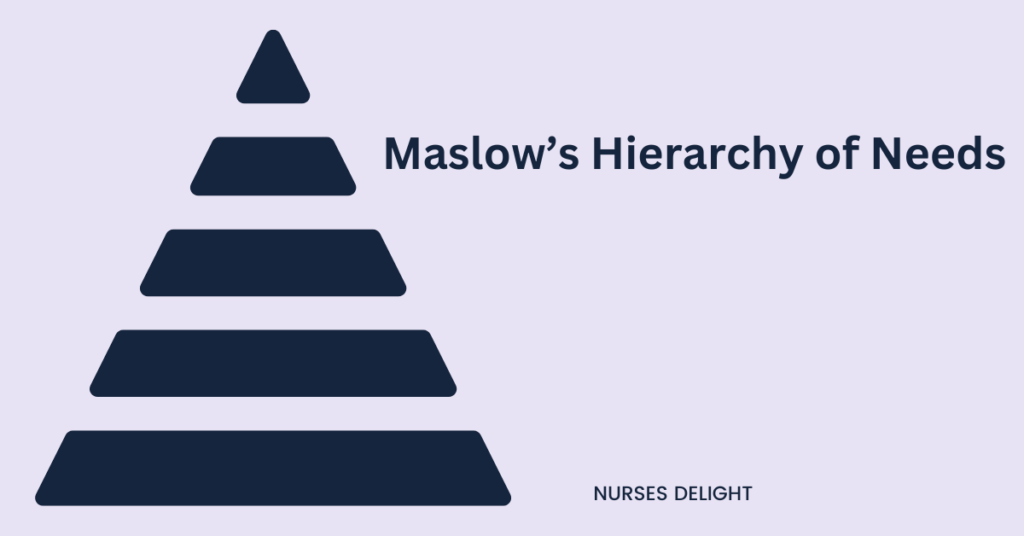Maslow’s hierarchy of needs is a motivational theory developed by an American psychologist called Abraham Maslow in 1943.
Needs are requirements that must be fulfilled. Certain needs are basic to all people and some may be more essential than others. Once a need is fulfilled, people tend to experience a need on a higher level of priority.
Maslow ranked human needs into five hierarchical levels depicted by a pyramid.
(Pyramid photo needed)
The model is further divided into;
- Deficiency needs
- Growth needs
Deficit needs (D-needs) are the term used to describe the first four levels, whereas being needs (B-needs) are the term used to describe the top level.
Deficiency needs stem from deprivation. When these needs are unmet, people become motivated and the longer the time taken to gratify the needs, the more aggravating they become. For example, the longer a person stays without taking water, the thirstier they become.

Physiological Needs
These are needs that are vital to our survival. They are usually biologic and include; water, food, air, shelter, clothing, warmth and sex.
According to Maslow, physiological needs must be met first before all other needs for the human body to function optimally.
Safety Needs
Safety needs denotes protection from harm; security, job insurance and freedom of fear. A person can have control and order in their lives.
Love and Belonging
These needs occur after the first two have been fulfilled. It is an emotional need that involves feeling of belongingness. People want to be valued by others and feel they are making a contribution to the world.
Examples are intimacy, trust, affection and acceptance.
Esteem Needs
Esteem needs are classified into two;
- Esteem for oneself-dignity, achievements, mastery and independence
- The desire for reputation and respect from others- prestige status
Self-Actualization Needs
An individual fully exploits their potentials once other needs have been met. They have desire to become anything they are capable of becoming. They seek self-fulfillment, personal growth and peak experiences.
Summary of Needs
- Human motivation is based on a hierarchy of requirements.
- Needs are arranged in a prepotency hierarchy wherein more fundamental wants must be partially satisfied (as opposed to entirely or partially) before greater requirements.
- The hierarchy of needs is not set in stone; rather, it may vary depending on extrinsic conditions or personal variations.
- The majority of conduct has multiple motivations, or concurrent based on several fundamental needs.



